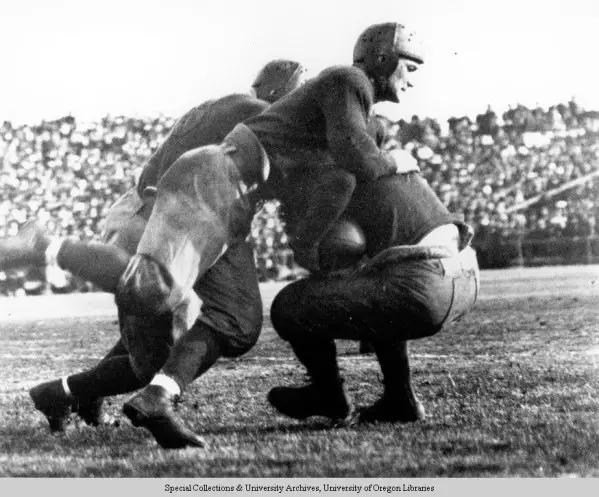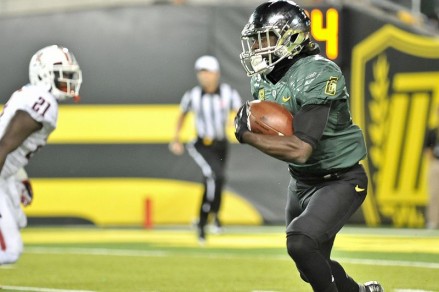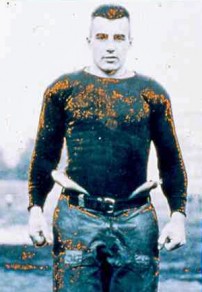In an increasingly specialized football culture, almost all players are limited to one specific position or role. Since the return to the two-platoon system in the 1960s, college athletes have focused their efforts and development on one single facet of the game.
As a result, we have nickel backs, pass-rushers, slot receivers, and numerous other specific positions that have led to limited versatility on an individual level.
Today, Oregon football fans are spoiled by the truly incredible accomplishments of athletes like De’Anthony Thomas. The Black Mamba has run, caught, returned, and even covered for the Ducks at an extremely high level over the past couple of seasons.
Not too many players show that kind of all-around talent in modern football.
However, nearly a century ago in 1914, a 23-year old player nicknamed Charles “Shy” Huntington exploded onto the Oregon football scene.
Huntington exceeded even the versatility of our beloved DAT. He threw, ran, blocked, covered, intercepted, and kicked. You name it, he did it.
Perhaps the most impressive showcase of the all-purpose stud’s talent came in the 1917 Rose Bowl, known then as the East-West Tournament Game, which was the Ducks’ last Rose Bowl victory until their 2012 victory over Wisconsin. Hard to believe, I know.
Huntington led his Webfoots to a 14-0 victory over Pennsylvania, then an Eastern powerhouse that had entered the matchup as the heavy favorite.
The All-American accounted for every single one of Oregon’s points during that game, rushing for 69 yards and a touchdown, throwing another, and kicking both extra points.
Oh yes — he also intercepted three passes, which is outstanding in any era.
While Huntington surely made an enormous impact on the field, he also made huge contributions to the Oregon football program as a coach. Returning to the sidelines in 1918, the former Webfoot standout led his team to a 4-2 record.
A season later, Huntington became one of the only men in history to play and coach for the same team during the Rose Bowl. Only three years after he had dominated Pennsylvania, he returned to Pasadena in search of another victory.
His 5-1 Webfoots entered the game with plenty of confidence. However, a team that was led on the field by his littlebrother Hollis, who rushed for 122 yards, ended up losing 7-6 to Harvard in a heartbreaking fashion.
To put the game in historical context, Oregon at this time played its home games on Hayward Field, and used only 13 players throughout the 1920 Rose Bowl.
Huntington proved to be one of the most successful coaches in Oregon history, at least according to the numbers.
Aside from Hugo Bezdek (.727), Huntington’s coach during the 1917 Rose Bowl, Mike Bellotti (.678), and Chip Kelly (.868), he had the highest winning percentage in program history among those who coached at least 40 games (.659).
Huntington did not stop there, however. He also coached both the baseball and basketball teams before his impact on Oregon sports was finished.
Looking back on his career, it is hard to say that anyone could have contributed in more ways to the Oregon football program. Huntington thrived in the running game, in the passing game, in the kicking game, on defense, and on the sideline for three different sports.
While Oregon’s modern all-around studs such as De’Anthony Thomas demonstrate a new brand of versatility, Huntington’s contributions went above and beyond, and he should be remembered for his outstanding impact on Oregon sports.
Related Articles:
Joey Holland graduated from the University of Oregon in 2013, majoring in History. He played several sports in high school, though football remains his passion. He has yet to miss a single Oregon Ducks home football game during his time in Eugene. Joey has written previously for Bleacher Report and Football Nation.
Joey welcomes your feedback.



